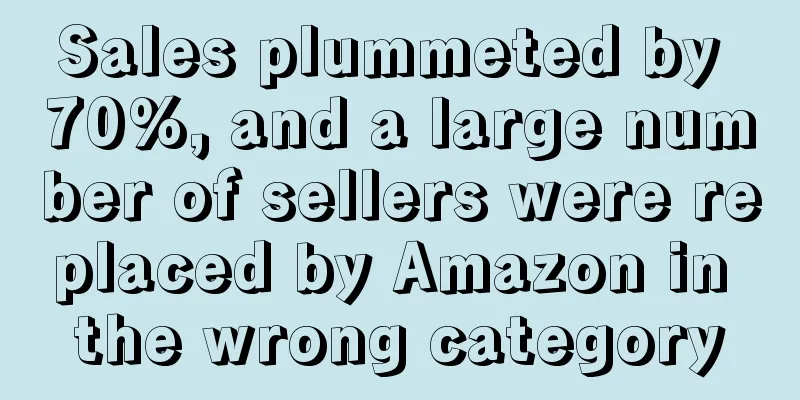|
Amazon has been making a lot of moves recently. First, the new warehouse capacity regulations were implemented, and then the return label policy was ready to go. Recently, it has taken action to rectify the chaos at multiple nodes. More than 70% of multi-node products have been deleted. Amazon is rectifying this chaos When uploading a listing, you often need to select a product category. The more accurate the category node selection and the higher the matching degree of product information, the more conducive it is to improving conversion rate. Generally speaking, sellers can only choose one product category, but as sales accumulate, Amazon will add products to other applicable category nodes based on buyer search habits and listing details.
Multiple classification nodes can increase the chances of a product being searched and exposed, thereby quickly improving sales rankings. For this reason, some sellers use various black technology methods to modify nodes to grab the Best Seller. Previously, it was reported in the article "Amazon sellers rely on misplaced categories to grab BS? Sales of peers plummeted by 50% during the peak season!" that some sellers misplaced categories to deceive Amazon and obtain the Best Seller logo.
Recently, some sellers reported that Amazon US began to crack down on the practice of merging multiple nodes to grab small category nodes to obtain BS marks last week. It is understood that this chaos has become increasingly rampant since the end of last year, resulting in confusion among BS products in various category nodes, and many large category node products with high sales have occupied the BS marks of some small category nodes.
The seller said that currently, more than 70% of multi-node products in major categories have been removed. The specific rectification method is to unify the merged multi-node variant listings into only one node, and the ranking is also only one, and then lock the node in the variant. This means that it will become very difficult to modify the node in the future. Now different nodes cannot share reviews and rankings, and even cause the node rankings of old links to be lost.
In fact, before this, some merchants would take advantage of loopholes in the platform rules and place some products with considerable sales in the slow-selling category, and obtain the Best Seller logo through illegal means. As a result, sales soared, with the highest growth exceeding 50%.
Therefore, many sellers are happy to see that the filling of multiple node loopholes means that the platform has taken another step towards compliance, effectively avoiding various chaos of grabbing small category BSRs, and giving small and medium-sized sellers more room for survival.
According to feedback from multiple parties, many confusing category nodes have been automatically modified by Amazon. However, some sellers also stated that there are still many mobile phone cases occupying the BSR of the auto parts subcategory. Sales plummeted by 70%, and a large number of sellers were replaced by Amazon in the wrong category However, while Amazon is vigorously cracking down on the above-mentioned violations, many sellers have reported that they were mistakenly killed by Amazon, and multiple products were assigned to the wrong nodes, resulting in a sharp drop in traffic and orders.
"The two links I sold for more than two years were inexplicably changed to completely irrelevant nodes. I never added or changed any nodes before. Now I have suffered losses for no reason. The customer service just passed the buck when I opened a case." "I woke up yesterday morning and found that it had also been changed. The outdoor area was changed to the home area. The number of visitors dropped by 2/3. There were only advertising flyers and no natural flyers." "I have two links here that have become one category, but before, Amazon matched the two categories itself. Now, only the category matched by Amazon itself is left. The categories filled in when listing in the backend are gone, and the traffic has been affected." “We found that some nodes were changed to nodes that were not related to the product, and then took over the top 100 slots of irrelevant nodes.”
One seller revealed that he opened the backend yesterday morning and found that the Amazon system automatically changed his listing to an unrelated category. The order data for the whole day showed that the self-order rate dropped from 70% to 20%, and 20% of them might even be orders added to cart a few days ago.
The seller tried to fix the product classification through the backend but failed, and received the following prompt: We have reviewed your suggestion, but cannot accept the proposed classification node change for ASIN xxx. The current classification node for this product is assigned based on the detail page and the way Amazon buyers find the product through search and browsing.
In addition, there are also sellers who have encountered the situation where the rankings and nodes of the categories of products that can be sold normally suddenly disappear. The current impact is that the brand name, ASIN and keywords of the seller’s product front-end search page cannot be searched, and the advertisement can still be opened normally, but all orders are placed based on advertisements.
Although the seller opened a case with the page team and the brand team, the replies they received were that they were helping to restore the data and that the system had indexed the data normally, the node has not been retrieved yet. Attempts to refresh the node using a table and to use FBA and FBM conversion to have the system re-crawl the node also did not work. It can be seen that under Amazon's iron fist, many innocent sellers have also been affected, with various nodes disappearing and wrong nodes being matched, resulting in a sharp drop in sales of a large number of products.
In fact, Amazon has previously severely criticized various misplaced nodes, and repeat offenders may be suspended from selling. This tightening of policies has also sounded the alarm for all sellers to put an end to such opportunistic chaos.
|










